I try to be generous with my younger self as I recall my early days fly fishing. Not only because my internal size chart was skewed, typically by half-a-palm, but because I related a great fish directly to a long fight. One of the first questions that accompanied a big fish photo was an ecstatic “How long did that thing fight for?!” The typical reply: “Oh man, 5 mins at least!” Sweet memories shared between a proud dad and a happy fisherkid. It’s not that big fish don’t fight, of course they do! My arm is thumping after bulldogging a tanky brown. But I trust my gear, I trust my angling ability and I lay into fish. If you’re letting a trout take you downstream stripping out backing, you may not yet know what it means to be an angler.
As much as it pains me to say: not too long ago, my buddy and I spent a day on a turbulent, blue ribbon river in Northern California with an ex-guide, professional angler, nature enthusiast, and pioneer of modern nymphing techniques in California. We hooked up on a lot of trout. Nothing big but a few in the 14-16-inch range. I managed to get through the day without fumbling into a current, or catching a tree. I picked apart some sweet runs and bounced bugs on the bottom of quick currents. I really can’t remember losing a trout. When the day was said and done we followed train tracks back to the cars, shared a few beers, and shook hands. All and all, I thought to myself we’ve handled business today. We picked apart good water and found quite a few fish in a tough system. My bud gave me a call the next day to talk trout and relive the day before. Midway through the conversation he said something that caught my attention. He said that the old pro we had fished with said I was still a fisherman, not yet an angler. At first, I was rocked. What does that mean? I read water, I caught fish, I put on the gear, I talked fishy, I am fishy. What’s the difference between a fisherman and an angler?
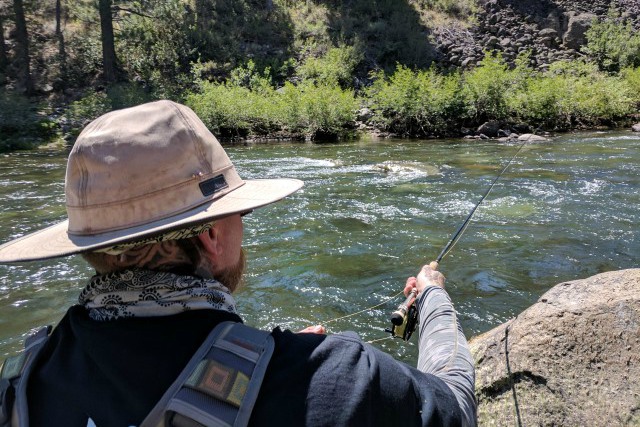
My buddy explained to me the pro had said I didn’t know how to fight fish yet. Isn’t the point of fishing to catch fish? If the fish gets to the net, what’s the difference? Here’s the difference between my mentality and execution, then and now. I don’t set straight-up, or try to keep my rod tip-high the whole fight. I am rarely chasing fish. I refuse to let them “spool me” (granted: some species like steelhead, salmon, and many saltwater fish will and the fighting style is different). I don’t let out line because the fish “wants to run”. I pride myself in a short, controlled fight. I am not hoping not to break off. Instead before flies even hit the water, I assess what’s the quickest way to land this fish. What angle do I need to set my rod towards, so that as soon as I make contact, I am in control? Where might this fish run to, and how do I command its nose in the opposite direction? If he does make a fool of me and gets into a current, where will I pick the fight back up? Ultimately, how quickly can I break this fish’s spirit in order to get it to hand and release it back into its hard-won feeding lane? Angler’s read water, put on the right bugs, make good drifts, respect the water, practice the etiquette, and catch fish. The biggest difference is we assess and execute the angles needed to efficiently land a fish, not physically exhaust it.
I can already hear the questions: “The fight is half the fun, what about the fight?” In response: I find it fun when I get to dog my buddy because a fish caught him off guard and took him for a ride. I am most satisfied when the tippet protection of my rod is being put to the test. My adrenaline is pumping when my rod is parallel to the bank bent over and I am mid tug-of-war against the pure strength of a trout. I don’t get a thrill when a foot-long fish takes me for a ride, I feel foolish, or worse, ignorant. I feel ignorant because I know my lack of fighting ability and focus is allowing this fish to exhaust all of its gathered energy in its desperate attempt to flee from the fly stuck in its mouth. The only trout I should be competing with is one that has hunted with its belly on the bottom of a stream dominating prime water.
Let me give you examples of good and bad angling. I’ll start with the bad, so by the time you’re done reading you aren’t left thinking I’m just a pup! There’s a secret reservoir in the Western Sierras fed by high alpine lakes where monster browns thrive. Back before my dad’s hair snowcapped, and his four sons arrived, he spent every weekend bushwhacking to lakes and creeks in the Sierras. He tells me stories of the plethora of girthy cutthroats and bows that used to lurk. The stories of untouched California waters always leave me drooling. This particular reservoir is well known for its 8-10-pound browns and year-round icy waters. In late fall, however, a small creek running into the main body of water starts to pump, and the browns start moving upstream into the current.
One early morning, I drifted a Zebra Midge and a jigged Hare’s Ear from left to right through a narrow set of rocks over a deep bucket. The jig sunk deep into gin-clear water and I could have sworn I’d grabbed bottom, but the bottom of rivers doesn’t move. Soon, I lifted my rod and stripped some line to find a gold glimmering shadow move below. With enough slack water in the pool and top current, as opposed to under-current, the beast pinballed around the hole. I ultimately had no control of its nose and I was hoping I didn’t lose the fish. Eventually, it turned downstream, and I leaned my rod back raising his head and thick broadside up to the surface. I only caught a glimpse of his dark sides, but it was clear I was losing a five-pound fish. Sure enough, the fish got so far downstream that there was no angle from rod to my fly, and the trout’s mouth was directly facing my rod tip. Pop, no more tension, no more fish, and one angry sailor-mouthed fisherman.
I hadn’t assessed where the fish might try to escape to. In light of simply prospecting water, I hadn’t even considered I might tag a big fish. I was caught off-guard. I didn’t establish an early angle. Lifting the rod straight up caused me to allow the fish to go wherever it chose. I should have set the hook to my right side instantly, setting the arena of the fight out of the current, and allowing for me to lean back against the fish’s desire to catch the current. That’s a big tip: set towards the bank, not into the current. It seems obvious, but check how many times you set upwards, and then follow a trout into the current.
Now for the good example. This past winter and spring were historic for California. We went from a severe drought to an oversaturated, dam busting, flood stage. As a result, all the rivers flooded. Lakes extended up canyons into rivers, lumber moved from mountain sides into the hydrosystems, and sediment turned even the most pristine waters chocolate. One of my favorite tailwaters to fish in, the Stanislaus National Forest, experienced an eight-month flood stage. In October, when the flows reached fishable, I made the 380-mile trek from Los Angeles back to my beloved Sierra home and met my buddy on the Stan. As expected, the river was still in somewhat of a flood stage. In some sections there was an extra 20 feet in width and nearly a mile of river had turned into lake. Nevertheless, fish were happy and concentrated in the new dynamic environment. I learned quickly that big 4mm tungsten heads were going to be the trick to piercing the top water column in order to find fish. One particularly shallow downhill section was split in two. Both sides featured a raging current, but they were separated by a wide rock bed.
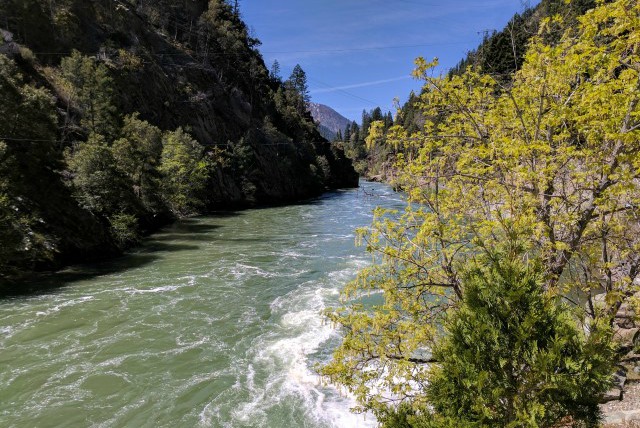
I was fishing right to left with my 11’ rod stretched out and over the end of the mad current, drifting flies into the glassy shallow bank of the divider. Ultimately, this spot seemed prime for healthy fish. It was soft water being fed by a strong current, with enough room for a fish to hunt bugs, and yet not enough room for small fish to compete for food. I realized the escape route for a trout would be either to cut down stream into the soft water, directly after the divider and into the other current, or move upstream. With the river in flood stage there was simply no way I could chase or keep an angle if the fish made it to the other current. Therefore, I couldn’t allow for it to work down. Which left me setting to my right, allowing the fish to move upstream, or into the current directly in front of me. If she moved towards the current, I’d have to use the opportunity to pull her all the way through it to my bank, then fight her in the small amount of water on my side of the current, using the rapid water almost as a wall.
So, out went my bugs, 30 degrees up to my right, 25 feet of line, and 11-foot rod stretched over a hurried current. Sure enough, right as my flies reached that soft, shallow bank, a chrome freight train moved to its left (away from me) and took them. She quickly realized she’d found a knock-off meal as she was met with a tug in the opposite direction. She tried to move upstream, and that was met with constant pressure towards the current. As she committed to the current, I committed to the bank. She zipped throw the current to the soft water on my side, and seeing me, made a dash back towards the current, but the current was my out of bounds line, and we met for a tug of war. Being at least 150 pounds heavier, and inevitably stronger, I won in seconds, she gave in not out of exhaustion, but a broken spirit. I netted the beautiful chrome creature and admired her glory. My buddy snapped a photo, and back into her clever home she went. Not the same ending before I graduated to an angler.

So, here’s my best advice: assess everything. Fight the fish before you even find the fish. In the dugout, we jokingly used to say, “Get your mental reps in!” Don’t be afraid to put pressure on a fish, particularly side pressure towards the bank, and a lot of it; why else did you buy such an expensive rod if it weren’t for the tippet protection? Whenever you can, keep the rod tip parallel to the water, this keeps the fish out of the strongest current and moving towards its eventual landing pad. Control the situation, don’t simply exhaust the fish. Remember this: you’re a human being with most likely 100-plus pounds of weight on the fish, ten of which is in the form of a smarter brain. Respect and protect these fish by getting them in quick, not exhausting them till you can drag them into your net.
What’s your angle? Please leave your thoughts and I’ll do my best to respond with something helpful or witty.
– Daniel

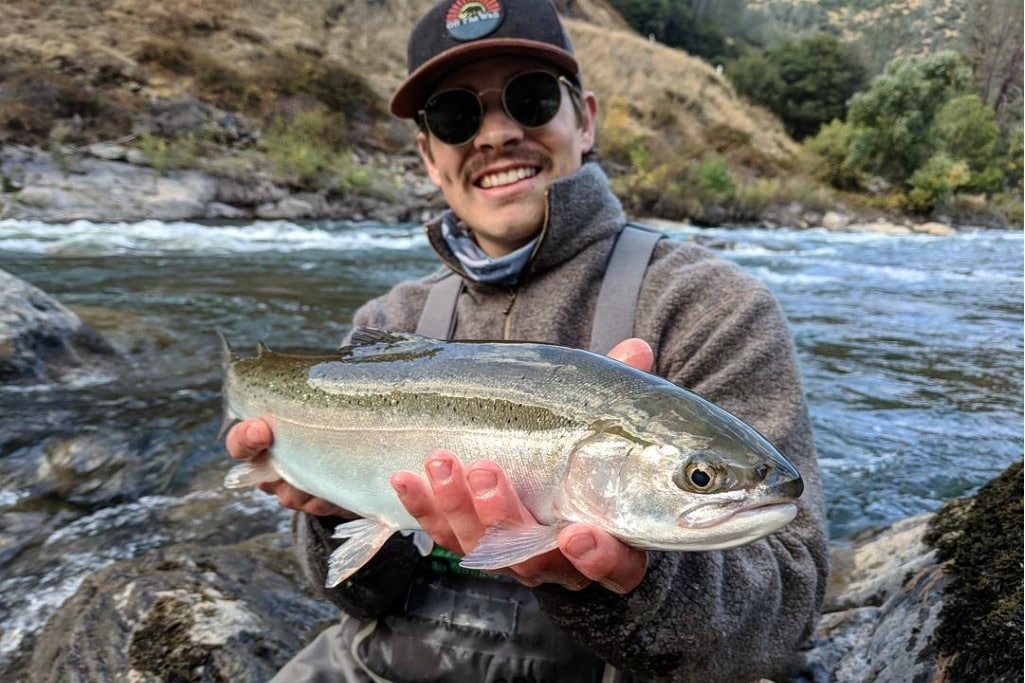
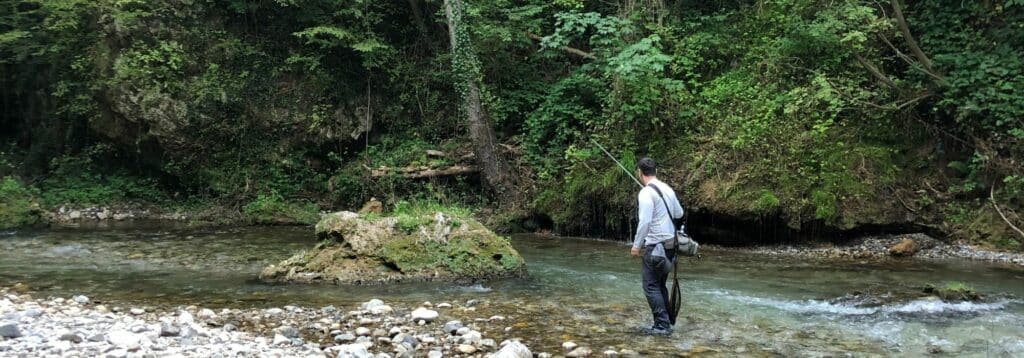
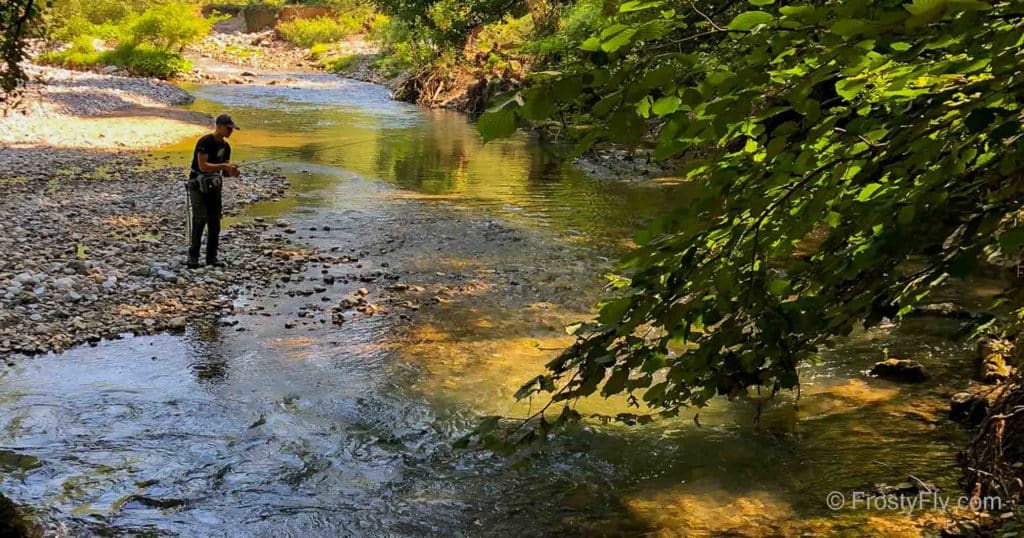

Very cool to read your work Son! Love your passion and your way with words, engaging and informative.
❤️ Mom